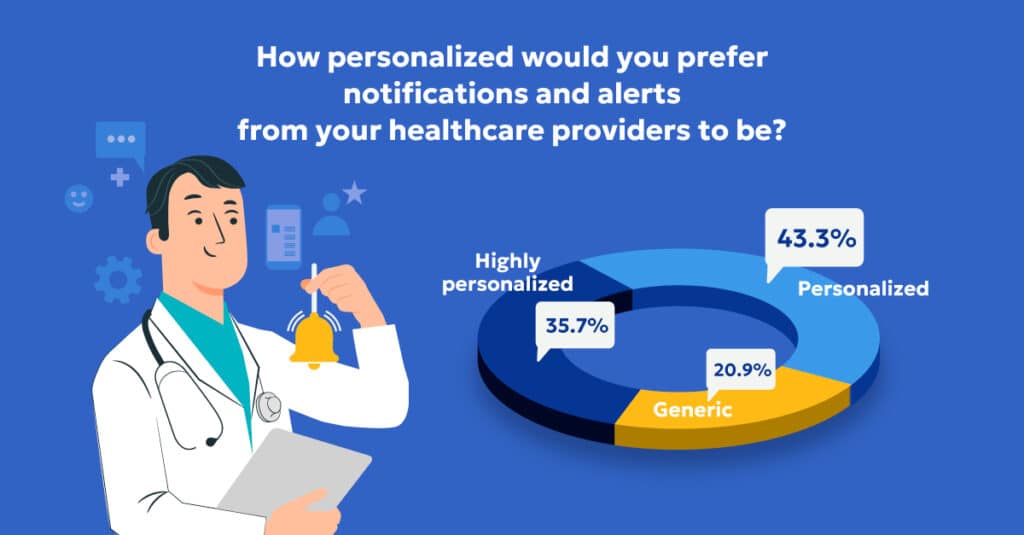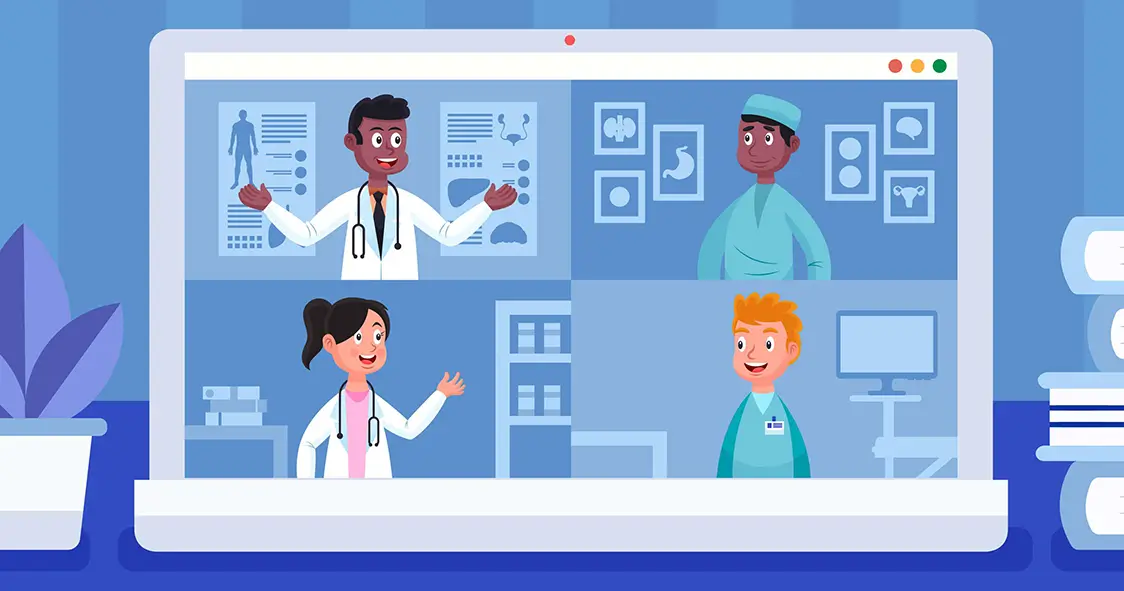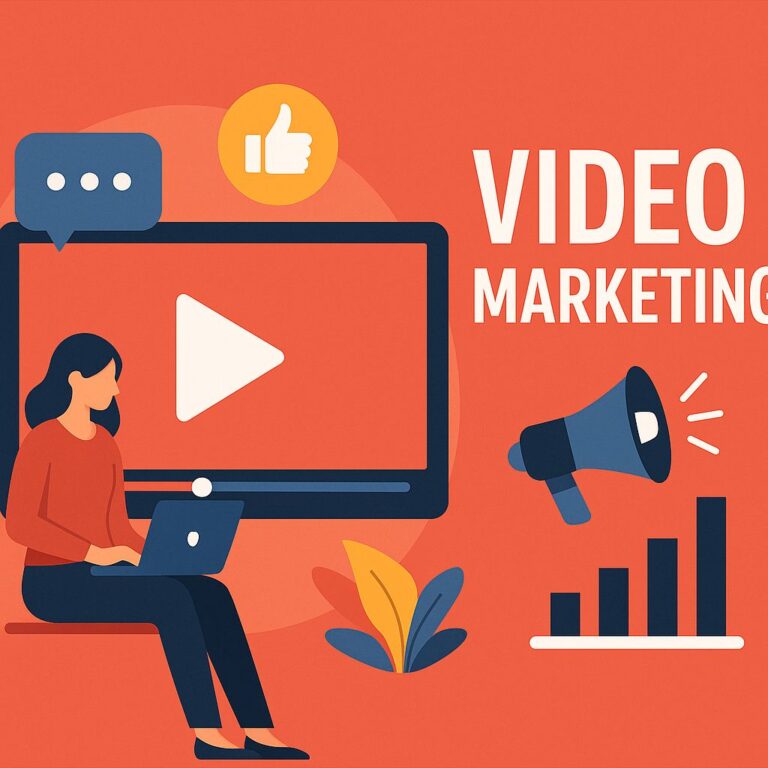Key Takeaways
- Healthcare explainer videos can reduce patient anxiety by up to 30% while improving understanding of complex medical procedures and treatments.
- Well-produced explainer videos save healthcare providers an average of 4-6 hours per week that would otherwise be spent explaining routine information.
- The most effective healthcare videos are 90-120 seconds long and use simple language at a 6th-8th grade reading level.
- Videos with closed captions and multilingual options increase accessibility and engagement across diverse patient populations.
- Digital Brew specializes in creating HIPAA-compliant healthcare explainer videos that transform complex medical information into clear, engaging content.
Healthcare is complicated. Patient confusion leads to anxiety, missed appointments, and poor adherence to treatment plans. Professional explainer videos cut through the complexity and deliver clear information when patients need it most.
The healthcare industry faces unique communication challenges that Digital Brew’s specialized explainer videos are designed to solve. With patients increasingly seeking information online before appointments, video has become an essential tool for healthcare providers looking to educate, reassure, and engage effectively.
Article-at-a-Glance
Explainer videos are transforming healthcare communication by making complex medical concepts accessible to patients of all literacy levels. They’re not just educational tools—they’re anxiety reducers, time savers, and powerful marketing assets. This article explores how professional healthcare explainer videos work, why they’re so effective, and how to implement them across your healthcare organization for maximum impact.
Why Healthcare Explainer Videos Are Transforming Patient Communication
The healthcare system often feels like a maze to patients. Medical terminology, complex procedures, insurance details, and treatment options create overwhelming cognitive load. Explainer videos cut through this complexity by presenting information visually and audibly, accommodating different learning styles and retention abilities.
Research shows that viewers retain 95% of a message when watched in a video, compared to just 10% when reading text. For healthcare providers, this dramatic difference in comprehension can translate to better patient outcomes, fewer questions, and smoother operations.

5 Key Benefits of Professional Explainer Videos in Healthcare
Healthcare organizations that implement professional explainer videos experience multiple simultaneous benefits that impact both patient satisfaction and operational efficiency. The return on investment typically becomes apparent within the first three months after implementation.
1. Breaking Down Complex Medical Information
Medical procedures and conditions often involve complex concepts that can overwhelm patients. Professionally crafted explainer videos transform this complexity into digestible information through carefully selected visuals, metaphors, and simplified explanations.
For example, instead of describing how chemotherapy targets fast-dividing cells using technical terminology, an animation might show “worker cells” specifically targeting and removing “troublemaker cells” while leaving “healthy cells” alone. These visual metaphors make abstract concepts concrete and memorable.
2. Reducing Patient Anxiety and Improving Compliance
Fear of the unknown drives patient anxiety. When patients understand what to expect during procedures, their anxiety levels decrease significantly. Studies show that patients who viewed procedure preparation videos reported 30% lower anxiety levels than those who received only written instructions.
This reduced anxiety translates directly to improved compliance. Patients who understand the “why” behind medication schedules or lifestyle recommendations are substantially more likely to follow through. Clear understanding builds trust, and trust builds adherence to medical advice.
3. Saving Staff Time and Resources
Healthcare professionals spend countless hours repeating the same information to different patients. From explaining pre-surgical protocols to detailing medication schedules, these necessary but repetitive conversations consume valuable clinical time. Utilizing explainer videos that simplify complex ideas can help streamline these communications and save resources.
By creating standardized explainer videos, healthcare organizations can redirect these conversations to more personalized care. Nurses report saving 45-60 minutes daily when routine information is delivered via video first, allowing follow-up conversations to focus on patient-specific questions rather than starting from zero.
“We estimated our nursing staff was spending nearly 15 hours per week explaining routine pre-operative procedures. After implementing explainer videos, that time dropped to less than 4 hours, and patient comprehension actually improved.” – Clinical Director, Regional Hospital System
4. Boosting Online Engagement and Visibility
Healthcare providers with video content on their websites experience 157% more organic traffic from search engines than those without. This increased visibility directly translates to patient acquisition and engagement. Google’s algorithms increasingly favor websites with video content, especially when that content answers common patient questions.
Videos also significantly increase time spent on healthcare websites. Visitors typically stay 2.6x longer on pages with video content, giving providers more opportunity to convey important information about services and expertise. This extended engagement builds trust before the patient ever walks through the door.
5. Creating Consistent Messaging Across Touchpoints
Healthcare organizations often struggle with consistency when explaining procedures or policies across different departments, locations, or individual providers. Variations in explanations can confuse patients and potentially lead to misunderstandings about care instructions. To address this issue, consider using explainer videos that simplify complex ideas, ensuring uniformity in communication across all touchpoints.
Professional explainer videos ensure that every patient receives identical core information, regardless of which staff member they interact with. This consistency is particularly valuable for large healthcare networks where maintaining uniform communication standards can be challenging.

Essential Elements of Effective Healthcare Explainer Videos
Not all healthcare videos deliver equal results. The most effective explainer videos share specific characteristics that enhance comprehension and engagement while maintaining medical accuracy. Learn how to convert viewers into customers with these strategies.
Clear, Jargon-Free Narration
Medical terminology that healthcare professionals use daily can be completely opaque to patients. Effective healthcare videos translate complex terminology into plain language without sacrificing accuracy. The best practice is to aim for 6th-8th grade reading level in scripts, which research shows optimizes comprehension across diverse patient populations. For more insights, check out how explainer videos simplify complex ideas.
When technical terms must be included, they should be immediately defined in simple language. For example: “You’ll undergo an endoscopy, which means your doctor will use a small, flexible camera to look inside your digestive tract.”
Engaging Visual Storytelling
The human brain processes visual information 60,000 times faster than text. Effective healthcare videos leverage this by using visual metaphors, color psychology, and character-driven narratives to make abstract medical concepts concrete. For instance, immune system functions might be illustrated as a security team protecting a building, making complex biological processes instantly relatable.
Animation offers particular advantages for healthcare topics that would be difficult or inappropriate to film with real patients. It allows for cross-sectional views of the body, microscopic perspectives, and simplified representations that enhance understanding without requiring graphic medical footage. For more examples, check out these animated healthcare explainer videos.
Appropriate Length and Pacing
Attention spans are limited, especially when processing new medical information. The optimal length for healthcare explainer videos is typically 90-120 seconds, though complex procedures may require up to three minutes. Beyond this threshold, retention decreases significantly.
Pacing is equally important. Information should be presented with deliberate pauses that allow viewers to process what they’ve learned. A common mistake is cramming too much information into a short video, which overwhelms rather than enlightens patients.
HIPAA Compliance and Accessibility Features
Healthcare videos must adhere to strict privacy regulations while being accessible to all patients. This means avoiding identifiable patient information in case studies and ensuring videos include closed captioning, transcript options, and potentially multilingual versions. For more insights, check out these animated healthcare explainer video examples.
Accessibility isn’t just about compliance—it’s about reaching every patient effectively. Videos with closed captions are watched 25% longer than those without, and 80% of viewers who use captions don’t have hearing impairments—they simply prefer having text reinforcement. For more insights on how to simplify complex ideas with explainer videos, explore our resources.

Types of Healthcare Explainer Videos That Deliver Results
Different healthcare scenarios call for different types of explainer videos. The most effective organizations deploy a strategic mix of these formats to address various patient and organizational needs.
Procedure Preparation Videos
Patients often arrive for procedures anxious and uncertain about what to expect. Procedure prep videos walk patients through exactly what will happen before, during, and after medical interventions—from routine colonoscopies to complex surgeries. These videos significantly reduce anxiety while improving preparation compliance.
The most effective procedure videos include specific preparation instructions, timeline expectations, sensory information (what patients will feel, hear, or experience), and recovery guidance. Facilities that implement these videos report 23% fewer day-of-procedure cancellations and 18% better preparation compliance. For more on how these videos can simplify complex ideas, check out our explainer videos.
Medication Usage Instructions
Patient medication errors are a significant challenge for healthcare providers. Medication explainer videos dramatically improve adherence by showing proper administration techniques, explaining dosing schedules, and highlighting important side effects to monitor. This visual reinforcement is particularly valuable for complex medication regimens or delivery systems like inhalers or injectable medications.
These videos serve as on-demand reference tools patients can revisit whenever uncertainty arises, rather than waiting to call their provider or, worse, guessing at proper usage. Pharmacies that provide medication instruction videos report 28% fewer patient follow-up calls about basic administration questions.
Service Overview Videos
Many patients struggle to understand the full scope of services available from healthcare providers. Service overview videos introduce specialized offerings, explain what conditions they treat, and guide patients through the process of accessing care. These videos are particularly effective for specialized services like physical therapy programs, mental health resources, or specialty clinics.
Beyond patient education, these videos serve as powerful marketing tools that differentiate healthcare organizations from competitors. Highlighting unique approaches, technologies, or care philosophies helps prospective patients understand what makes your services distinct. For more on how videos can simplify complex ideas, check out explainer videos that simplify complex ideas.
Patient Testimonial Animations
Direct patient testimonials present privacy challenges in healthcare marketing. Animated testimonial videos solve this problem by using anonymous character representations while sharing authentic patient experiences and outcomes. These story-driven videos create emotional connections while protecting patient identities.
The narrative structure of these videos—presenting a problem, journey, and resolution—helps prospective patients envision their own successful treatment journey. Healthcare providers report these videos are particularly effective for services patients might be hesitant to pursue, like mental health treatment or weight management programs.
Staff Training and Onboarding Videos
Healthcare explainer videos aren’t just for patients. Staff training videos ensure consistent knowledge across departments and locations while reducing the burden on trainers. From explaining new protocols to demonstrating proper equipment usage, these videos standardize internal education.
Healthcare organizations that implement video-based training report 60% faster onboarding times and 40% better information retention compared to traditional training methods. This efficiency is particularly valuable in healthcare environments facing staffing challenges and high turnover.

Measuring the Impact of Your Healthcare Explainer Videos
The true value of healthcare explainer videos emerges when organizations implement robust measurement frameworks. Without tracking specific metrics, it’s impossible to optimize content or demonstrate return on investment to stakeholders.
Forward-thinking healthcare organizations establish baseline measurements before video implementation, then track improvements across multiple dimensions. This data-driven approach allows for continuous refinement of video content and distribution strategies.
Patient Comprehension Metrics
The primary purpose of healthcare explainer videos is improving patient understanding. Measuring this impact can be accomplished through brief post-video knowledge checks, comparing pre-procedure compliance rates before and after video implementation, or analyzing changes in related patient questions to staff.
Many healthcare systems now integrate simple 2-3 question comprehension checks after videos in their patient portals. These quick assessments not only measure understanding but also reinforce key information through repetition.
Staff Time Savings
Time saved by clinical staff represents one of the most measurable and significant returns on video investment. Tracking time spent on patient education before and after video implementation provides concrete efficiency metrics that directly impact operational costs.
Conversion Tracking for New Patients
Marketing-focused healthcare videos should include specific conversion tracking mechanisms. This might include dedicated landing pages, unique phone tracking numbers, or special appointment request forms linked directly from videos. These mechanisms allow precise measurement of how videos influence patient acquisition.
The most sophisticated healthcare organizations also track the patient lifetime value (LTV) from video-influenced conversions, comparing it against other marketing channels to optimize marketing investment allocation.
- Track video watch time and completion rates to identify content that resonates most effectively
- Measure changes in appointment show rates after implementing procedure preparation videos
- Monitor changes in patient satisfaction scores related to information clarity
- Compare medication adherence rates between patients who watched instruction videos versus those who received only written information
- Analyze changes in call center volume for questions addressed in explainer videos
Comprehensive measurement frameworks transform healthcare videos from perceived “nice to have” content into strategically essential communication tools with demonstrable ROI.
Budget Considerations and ROI for Healthcare Video Production
Healthcare organizations often hesitate at the initial investment required for professional explainer videos. However, when evaluated against long-term benefits and alternative communication costs, well-produced videos typically demonstrate compelling financial returns.
The key to maximizing ROI is understanding the true cost comparison between video production and traditional patient education methods, including staff time, printed materials, and potential costs of patient misunderstanding.
Typical Cost Ranges for Professional Videos
Professional healthcare explainer videos typically range from $3,000-$25,000 per video, depending on length, complexity, animation style, and specialized medical content requirements. This initial investment is offset by the videos’ multi-year useful lifespan and ability to reach unlimited patients without incremental costs.
In-House vs. Outsourced Production
|
Consideration |
In-House Production |
Professional Production Partner |
|---|---|---|
|
Initial Cost |
Lower per-video cost after equipment investment |
Higher per-video cost, but no equipment investment |
|
Quality |
Variable based on staff expertise |
Consistently professional with specialized healthcare expertise |
|
Time Requirement |
Significant staff time diverted from primary responsibilities |
Minimal internal time commitment beyond content review |
|
Medical Accuracy |
Requires careful internal review process |
Partners with healthcare expertise bring built-in medical knowledge |
|
Scalability |
Limited by available staff resources |
Easily scalable based on organizational needs |
The true cost comparison must account for hidden expenses in the in-house approach. Organizations often underestimate the time investment required from clinical experts and marketing teams to produce quality content, as well as the opportunity cost of diverting these resources from other priorities.
Professional production partners specializing in healthcare bring invaluable industry-specific expertise that dramatically reduces the burden on internal teams. Their familiarity with medical concepts, terminology, and regulations accelerates production while ensuring content accuracy.
Most healthcare organizations find a hybrid approach most effective, where selected high-priority videos are professionally produced, establishing quality templates that internal teams can then adapt for simpler content needs.
Calculating Long-Term Value
The most comprehensive ROI calculations examine both direct cost savings and revenue generation potential. Direct savings include reduced staff time for repetitive explanations, fewer printed materials, decreased call center volume, and improved operational efficiency through better-prepared patients.
Revenue generation metrics might include new patient acquisition through video marketing, reduced no-show rates, improved treatment plan adherence leading to better outcomes, and enhanced reputation driving referrals. Healthcare organizations typically find the combined impact justifies video investments within 6-12 months of implementation.
Take Your Patient Communication to the Next Level
Clear communication is at the heart of effective healthcare delivery. Professional explainer videos transform complex medical information into accessible, engaging content that improves patient understanding, reduces anxiety, and drives better health outcomes. For healthcare organizations seeking to elevate their patient experience while improving operational efficiency, Digital Brew specializes in creating HIPAA-compliant healthcare explainer videos that deliver measurable results.

Frequently Asked Questions
Q: How long should a healthcare explainer video be?
Q: Can explainer videos help reduce patient no-shows?
Q: What animation style works best for sensitive medical topics?
The most effective approach often combines different animation techniques—using more abstract styles for sensitive bodily functions while employing character animation for emotional aspects of the patient journey.
Q: How do I ensure my explainer videos remain HIPAA compliant?
When showcasing patient experiences, always use composite characters rather than specific individuals, and have all medical content reviewed by compliance officers before publication. Specialized healthcare video production partners will have established review processes to ensure regulatory compliance.
Q: How often should healthcare explainer videos be updated?
Establishing a regular review schedule—where clinical teams assess video content annually for continued accuracy—helps maintain the educational value and compliance of your video library. Many healthcare organizations create modular videos with easily updatable segments to minimize full reproduction costs.
To maximize the longevity of healthcare videos, focus scripts on established medical concepts unlikely to change dramatically, avoid referencing specific costs or insurance details that frequently change, and consider creating evergreen content that covers fundamental health topics with enduring relevance.




